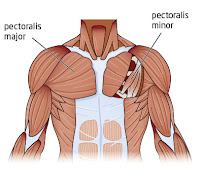Many people come into my Beverly Hills chiropractic office asking what they can do to stretch their upper backs. Upper back pain and stiffness has become more common as the use of computers and laptops has increased. I always say that the best stretch for the upper back is really a stretch for the chest, because when the chest muscles (pectorals major and minor) get tight, they can cause the upper back muscles to become overactive.
As far as I’m concerned, pec stretches are fundamental, so EVERYONE should be doing them. But especially people with neck pain, upper back stiffness or shoulder injuries should ultimately open up their chest areas. Watch the video below to see the best pec stretch for flexibility and upper back pain relief.















